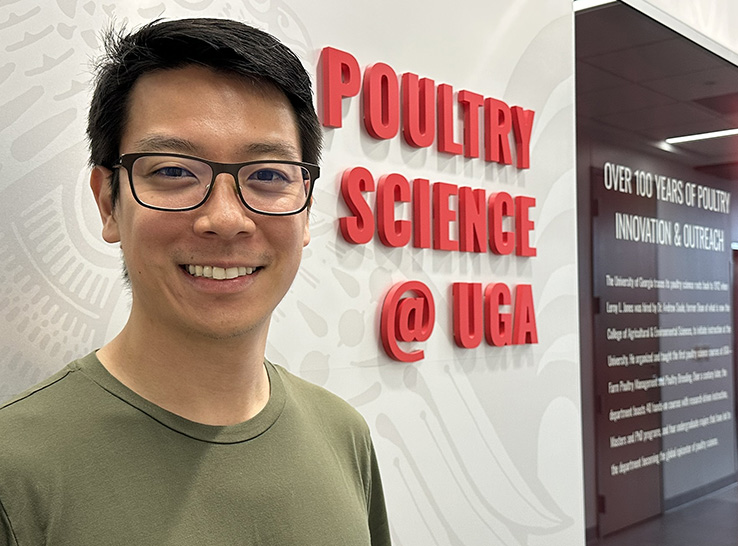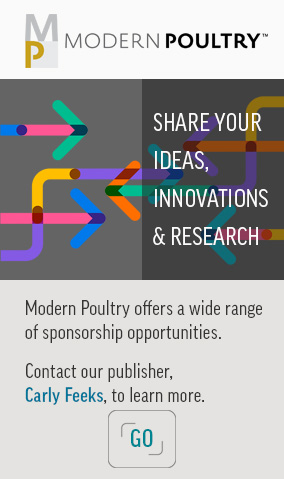By Allison Kawaoku, MS student
Graduate Research Assistant, University of Georgia
Athens, Georgia
After earning my DVM from the University of São Paulo (Brazil), I worked in the poultry industry for approximately 8 years before joining the Department of Poultry Science at the University of Georgia to pursue my master’s degree in poultry nutrition under Sean Chen, PhD. During that time, I traveled across Brazil and other South American countries. In these countries, I noticed that most of the time, the root of challenges in the broiler industry came from management variations and the difficulty of maintaining appropriate communication and traceability in a live-production operation that integrates multiple departments and fields of knowledge.
One example of this is the use of nutritional strategies such as copper supplementation, which can support performance but also cause adverse effects if not managed carefully.
Copper is widely used in the broiler industry for its growth-promoting effects, with supplementation levels above the nutrient requirement (125 to 250 ppm) being a common and economical management strategy.1 However, questions remain about the optimal dosage and the maximum tolerable level for broilers, particularly under different litter conditions.
To provide insights related to this question, we conducted a 49-day trial with 1,776 Cobb 500 male chicks divided into four copper levels (5, 125, 250 and 500 ppm of copper sulfate pentahydrate) with six replicates of 37 birds per replicate per treatment and raised in two litter conditions (used and new) to simulate higher doses of copper supplementation and address its interaction with different litter conditions.
Importance of understanding copper supplementation strategy
Copper is an essential trace mineral in poultry, playing a multifaceted role in physiological processes, including serving as a cofactor for several metalloenzymes (e.g., cytochrome c oxidase, lysyl oxidase and superoxide dismutase) and regulating lipid metabolism.2,3,4 Additionally, its supplementation in poultry diets has proven to be beneficial.5,6 For example, not only is it critical for metabolism, but it is also key for improving gut health, enhancing antioxidant activity and strengthening immune defense systems.7
The growing trend of reducing antibiotic use in poultry production has led to increased supplementation of copper above dietary requirements in broiler diets due to its growth-promoting, anti-inflammatory and antibacterial properties. However, research evidence indicates that copper can be detrimental to chickens at high levels, with 250 ppm being the maximum tolerated amount of copper for poultry, according to the National Research Council.8
Because copper can be supplemented from both feed and water, it is essential to ensure proper traceability between the feed mill and the farm to avoid the risk of excess copper intake when supplementing drinking water in the broiler house, especially if the chickens are already receiving higher levels of copper above the requirement from their feed. Too much copper could negatively impact their growth performance.
Copper, litter interaction influences performance
The interaction between litter quality and copper level is critical during the starter and grower phases. In our study, we observed that, during the starter phase, the 250 ppm copper level yielded comparable growth performance results (bodyweight (BW), body-weight gain (BWG) and feed intake) across litter types. At the 5 and 125 ppm levels, litter quality influenced performance, as evidenced by higher BW, BWG and feed intake with the new litter compared to the used litter.
For the grower phase, no performance differences were observed between the used or new litter. However, in the starter and grower phases, the 500 ppm group, regardless of the litter condition, underperformed compared to the lower copper dosages. Additionally, in both phases, the interaction between litter quality and copper levels did not affect the feed-conversion ratio (FCR). However, at the 250 ppm level, there was a main effect benefit in FCR compared to the other dosages in both phases.
During the finisher period, we did not notice an interaction effect. But BW and BWG were higher with the 5, 125 and 250 ppm copper levels than with the 500 ppm level. These results are interesting because they suggest that we may not really need to use copper in high dosages in late stages to maintain appropriate performance.
Note that, in this trial, no differences in blood copper levels or gizzard lesions were observed.
It is important to add that we explored the safe-margining level of copper supplementation using a broken-line regression model. A significance was observed for BWG: Under used-litter conditions, the marginal copper requirement to optimize BWG was higher (250 ppm) compared to new litter (234 ppm), likely due to its antimicrobial and growth-promoting effects.
Applying the evidence
Our findings reinforce the importance of considering environmental conditions to determine nutrient requirements. We observed that moderate copper levels (125 to 250 ppm) can enhance early performance, but litter conditions may influence its efficacy. We also demonstrated that 250 ppm is a suitable maximum tolerable level. However, environmental factors must be considered because new litter had lower copper-safety margins than used litter in later stages.
Final considerations
In our research, we explored the supplementation with copper sulfate pentahydrate due to its practicality and economical approach adopted by the industry. But in a broiler operation, it is crucial to be aware of the type of copper supplementation used (e.g., inorganic copper, organic copper, tribasic copper chloride), because they vary in digestibility and availability.9
To avoid overdosing, it is critical to have clear communication within your organization about your plan for supplementing copper while considering your field circumstances (stress, biosecurity, etc.).
As a next step, our group is evaluating the interaction of copper with other nutrients to understand its impact on digestibility and feed efficiency while also minimizing environmental contamination.
References
- Pesti GM, Bakalli RI. Studies on the feeding of cupric sulfate pentahydrate and cupric citrate to broiler chickens. Poult Sci. 1996;75:1086-1091. doi 10.3382/ps.0751086
- Bakalli RI, Pesti GM, Ragland WL, Konjufca V. Dietary copper in excess of nutritional requirement reduces plasma and breast muscle cholesterol of chickens. Poult Sci. 1995;74:360-365. doi 10.3382/ps.0740360
- Leeson S. Copper metabolism and dietary needs. Worlds Poult Sci J. 2009;65:353-366. doi 10.1017/S0043933909000269
- Pang Y, Patterson JA, Applegate TJ. The influence of copper concentration and source on ileal microbiota. Poult Sci. 2009;88:586-592. doi 10.3382/ps.2008-00243
- Leeson S. Copper metabolism and dietary needs.
- National Research Council. Mineral Tolerance of Animals: Second Revised Edition, 2005. The National Academies Press, Washington, DC.
- Leeson S. Copper metabolism and dietary needs.
- National Research Council. Mineral Tolerance of Animals
- Leeson S. Copper metabolism and dietary needs.




